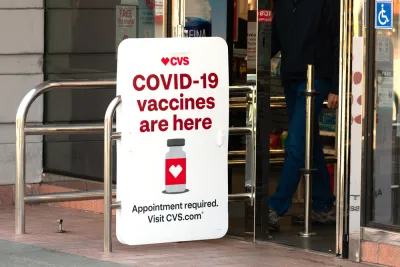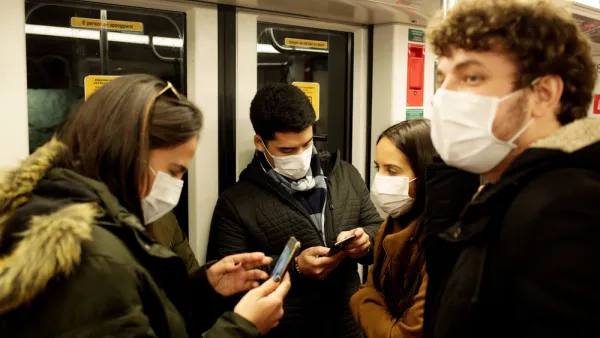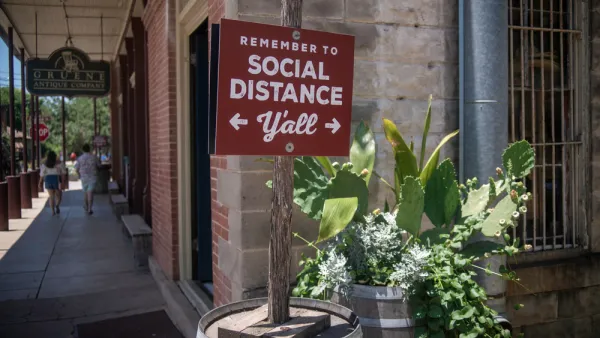The plunge in daily new coronavirus cases has ceased and may be climbing again, but the news is brighter when looking at the summer. Most of the public health experts interviewed by The New York Times believe a surge is likely but not inevitable.

“We may be done with the virus, but clearly the virus is not done with us,” Rochelle Walensky, the director of the Centers for Disease Control and Prevention, said during a Feb. 26 press briefing by the White House COVID-19 Response Team. She added that "the latest data suggests that these declines may be stalling, potentially leveling off at, still, a very high number."
Although we have been experiencing large declines in [COVID-19] cases and [hospital] admissions over the past six weeks, these declines follow the highest peak we have experienced in the pandemic.
Daily new COVID-19 cases in the United States started plunging after Jan. 8, when they set a record by exceeding 300,000 in one day, according to The New York Times coronavirus tracker. The steep downward slide appears to have stopped six weeks later, on Feb. 21, with almost 55,200 daily cases reported, making for a 7-day average of just below 66,400. Walensky shared a similar observation on Friday, though the CDC data differs somewhat from that of the Times:
We at CDC consider this a very concerning shift in the trajectory. The most recent seven-day average of cases — approximately 66,350 — is higher than the average I shared with you on Wednesday. In fact, cases have been increasing for the past three days compared to the prior week.
The Washington Post coronavirus tracker on Feb. 28 indicates that daily new coronavirus cases in the United States have dropped to 20 per 100,000 people, placing most states outside of the red zone (above 25 per 100k—see the map). However, it shows an increase of 5% in new cases in the past week.
The plateauing or increase, time will tell, is occurring at the same level where the country was three months ago on Oct. 23, 2020, and before then at the height of the pandemic's summer or second surge in late July. See the graph of daily new reported cases from March 2020 to Feb. 26 on Friday's New York Times Coronavirus Briefing, written by Jonathan Wolfe, to visualize the three surges and the line that is beginning to rise on Feb. 22.
What the experts say lies ahead
Is this "the beginning of the end?" asks Wolfe on Feb. 26. "My colleague Apoorva Mandavilli, who covers science for The Times, set out to answer this question and spoke to 21 experts about the future of the pandemic in the U.S."
“Just about all of them were optimistic about the mid- to long-term future, certainly about the summer,” Apoorva said. At the very least, most scientists say they now believe that the worst of the pandemic is behind us.
But Apoorva also told me the experts were concerned about the next few weeks and the high likelihood of a “fourth wave” of new cases.
"Looking ahead to late March or April, the majority of scientists interviewed by The Times predicted a fourth wave of infections," reported Mandavilli in the source article published on Thursday, the day before the White House press briefing. "But they stressed that it is not an inevitable surge, if government officials and individuals maintain precautions for a few more weeks."
A minority of experts were more sanguine, saying they expected powerful vaccines and an expanding rollout to stop the virus. And a few took the middle road.
“We’re at that crossroads, where it could go well or it could go badly,” said Dr. Anthony Fauci, director of the National Institute of Allergy and Infectious Diseases.
Two epidemic curves
"The downward curve of infections with the original coronavirus disguises an exponential rise in infections with B.1.1.7, the variant first identified in Britain, according to many researchers," adds Mandavilli.
“We really are seeing two epidemic curves,” said Ashleigh Tuite, an infectious disease modeler at the University of Toronto.
The B.1.1.7 variant is thought to be more contagious and more deadly, and it is expected to become the predominant form of the virus in the United States by late March.
Many governors haven't gotten the message from experts that now is not the time to lift restrictions. Gov. Greg Abbott of Texas is considering ending the state's mask mandate despite an 83% increase in daily new COVID cases in the past week (see graph), according to The Washington Post coronavirus tracker on Feb. 28.
Surge or wave?
This correspondent has been careful to avoid using "wave," a term used for the 1918 pandemic for the simple reason that the virus changed, becoming far more lethal in the second wave in the fall. In the current pandemic, heretofore the virus hadn't changed during the first three surges. With the likely arrival of a fourth, possibly variant-induced surge, "wave" may now be appropriate, though Kaiser Health News, STAT, and other health media sources continue to use surge.
Uncertainty ahead
The last word goes to Mandavilli.
The road back to normalcy is potholed with unknowns: how well vaccines prevent further spread of the virus; whether emerging variants remain susceptible enough to the vaccines; and how quickly the world is immunized, so as to halt further evolution of the virus.
Related in Planetizen:
-
Are We 'Rounding the Corner' in the Pandemic? February 16, 2021
-
Post-Pandemic: Living with COVID, January 31, 2021
-
Pandemic Endgame: The Goalposts are Moving, December 30, 2020
FULL STORY: The Coronavirus Is Threatening a Comeback. Here’s How to Stop It.

National Parks Layoffs Will Cause Communities to Lose Billions
Thousands of essential park workers were laid off this week, just before the busy spring break season.

Retro-silient?: America’s First “Eco-burb,” The Woodlands Turns 50
A master-planned community north of Houston offers lessons on green infrastructure and resilient design, but falls short of its founder’s lofty affordability and walkability goals.

Delivering for America Plan Will Downgrade Mail Service in at Least 49.5 Percent of Zip Codes
Republican and Democrat lawmakers criticize the plan for its disproportionate negative impact on rural communities.

Test News Post 1
This is a summary

Test News Headline 46
Test for the image on the front page.

Balancing Bombs and Butterflies: How the National Guard Protects a Rare Species
The National Guard at Fort Indiantown Gap uses GIS technology and land management strategies to balance military training with conservation efforts, ensuring the survival of the rare eastern regal fritillary butterfly.
Urban Design for Planners 1: Software Tools
This six-course series explores essential urban design concepts using open source software and equips planners with the tools they need to participate fully in the urban design process.
Planning for Universal Design
Learn the tools for implementing Universal Design in planning regulations.
EMC Planning Group, Inc.
Planetizen
Planetizen
Mpact (formerly Rail~Volution)
Great Falls Development Authority, Inc.
HUDs Office of Policy Development and Research
NYU Wagner Graduate School of Public Service





























